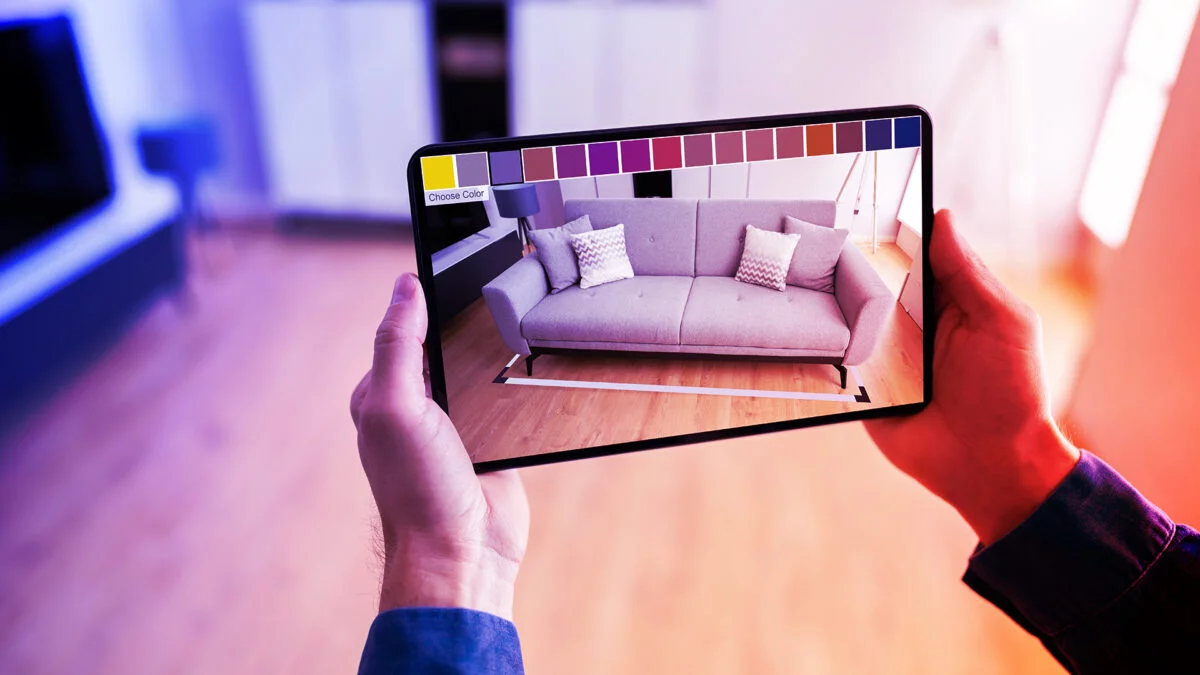The use of cutting-edge technology is causing the real estate sector, which is renowned for its dependence on in-person meetings and experiences, to change quickly. Artificial intelligence (AI) and augmented reality (AR), two of the advancements influencing this shift, have become potent instruments that are changing how real estate is marketed and displayed. When combined, these technologies provide individualized, effective, and immersive experiences that make the process easy for both buyers and sellers.
In addition to improving the interactive and visual aspects of real estate marketing, integrating AR and AI into property showcases allows for data-driven insights that expedite decision-making. These solutions are changing the conventional environment and establishing new benchmarks for customer involvement by fusing sophisticated algorithms with virtual upgrades.
The Role of Augmented Reality in Property Showcases
Through the overlaying of digital materials onto real-world locations, augmented reality creates an interactive experience that combines virtual and physical spaces. This technology makes it possible for prospective buyers to see properties in previously unthinkable ways. By converting static real estate listings into interactive, captivating presentations, augmented reality (AR) helps clients visualize how a space can meet their needs.
For example, AR applications enable users to virtually furnish a property by placing digital furniture and décor within the space. This feature is particularly beneficial for vacant homes, where empty rooms can appear uninspiring. By allowing potential buyers to see how their preferred style or layout could look, AR builds a deeper connection with the property by bridging the gap between imagination and reality.
In addition, augmented reality allows for remote viewing, which lets purchasers inspect houses from the convenience of their homes. Users can do virtual walkthroughs of a property by scanning a QR code or using an app, looking at every aspect as though they were there in person. For purchasers from other countries or those with busy schedules, this ease is essential because it guarantees accessibility and engagement regardless of how far away they are.

AI-Driven Insights and Personalization
Artificial intelligence brings unparalleled efficiency and intelligence to property showcases. AI finds trends, predicts customer preferences, and customizes recommendations according to user requirements by evaluating vast amounts of data. The buyer experience is improved by this degree of customization, which increases its effect and value.
AI-powered technologies can produce personalized recommendations in real estate displays according to a buyer’s browsing history, spending limit, and lifestyle choices. For example, a person looking for a family house would get suggestions that stress large homes close to parks and respectable schools. On the other hand, a young professional might be shown sleek, contemporary residences in thriving urban areas.
AI also improves search with virtual assistants and clever chatbots. By responding to inquiries about properties, setting up viewings, and offering comprehensive details on features and amenities, these systems engage with users in real time. AI-powered assistants facilitate communication by providing prompt assistance, guaranteeing a seamless and pleasant experience for customers.
Immersive Virtual Tours: The Intersection of AR and AI
One of the most significant advancements in property showcases is the integration of AR and AI to create immersive virtual tours. These tours enable a thorough examination of properties by fusing the analytical powers of artificial intelligence with the visual improvements of augmented reality.
Users may explore properties at their own pace, taking in every room, detail, and corner, thanks to immersive virtual tours. By offering contextual information throughout the journey, AI algorithms improve this experience. For instance, users may see pop-ups on the manufacturers of appliances, the materials of the countertop, or energy-saving features as they navigate through a kitchen. In addition to providing information, this interactive layer engages users and aids in their decision-making.
These technologies also enable comparative analysis during virtual tours. Buyers can view side-by-side comparisons of properties, highlighting differences in size, design, and amenities. This feature simplifies decision-making, particularly for those evaluating multiple options.
The Impact on Real Estate Developers and Agents
For developers and real estate agents, AR and AI are invaluable tools that streamline operations and enhance marketing strategies. These technologies allow professionals to present properties more effectively, attract a broader audience, and close deals faster.
Augmented reality provides developers with the ability to showcase off-plan properties. Through AR visualizations, prospective buyers can explore 3D models of future homes or commercial spaces, gaining a clear understanding of layouts, designs, and finishes. This feature is instrumental in building trust and excitement for projects still under construction.
Agents benefit from AI’s ability to automate repetitive tasks, such as creating property descriptions, analyzing market trends, and managing client interactions. By delegating these responsibilities to AI-powered tools, agents can focus on high-value activities like negotiating deals and nurturing client relationships.
Moreover, AR and AI improve the overall efficiency of the property showcasing process. Virtual tours and remote viewing options reduce the need for physical appointments, saving time for both agents and clients. This efficiency is particularly valuable in competitive markets, where timely decisions often determine outcomes.
Enhanced Buyer Confidence Through Data and Visualization
One of the most significant challenges in real estate is building buyer confidence. Purchases often involve substantial financial commitments, and any uncertainty can delay or derail decisions. AR and AI address this challenge by providing buyers with detailed, accurate, and transparent information about properties.
Augmented reality’s ability to visualize potential changes—such as remodeling or redecorating—helps buyers see the true potential of a property. For instance, an outdated kitchen can be transformed into a modern culinary space with a simple AR overlay, showcasing the possibilities without requiring physical renovations.
Artificial intelligence complements this visualization by offering data-driven insights, such as market value predictions, neighborhood analytics, and investment potential. Buyers can evaluate how a property aligns with their financial goals, empowering them to make confident and informed choices.

The Role of AR and AI in Sustainability and Accessibility
As sustainability becomes a key consideration in real estate, AR and AI play pivotal roles in promoting eco-friendly practices and inclusive designs. AR applications can demonstrate energy-efficient upgrades, such as solar panels or green roofs, giving buyers a clear picture of environmental benefits.
AI further supports sustainability by analyzing energy consumption patterns and suggesting cost-saving measures. For example, smart home features powered by AI can optimize heating, cooling, and lighting systems, enhancing both efficiency and comfort.
In terms of accessibility, AR and AI enable inclusive property showcases that cater to diverse needs. Virtual tours can include features for visually or hearing-impaired users, such as audio descriptions or text overlays. This inclusivity ensures that every client, regardless of ability, has access to a seamless and engaging experience.
Challenges and Ethical Considerations
While the benefits of AR and AI in property showcases are significant, their adoption also presents challenges that the industry must address. Cost remains a barrier for smaller agencies or independent agents, as implementing these technologies often requires substantial investment. However, as the tools become more accessible, their cost-effectiveness is expected to improve.
Ethical considerations also play a crucial role in the integration of AR and AI. Transparency is essential when using AI-driven tools to analyze data or make recommendations. Buyers and sellers must be informed about how their data is used and protected. Similarly, AR visualizations should accurately represent properties to avoid misleading clients.
The Future of AR and AI in Real Estate
The combined potential of AR and AI in property showcases points to a future where technology and real estate are seamlessly intertwined. As advancements continue, these tools are likely to become even more sophisticated, offering hyper-personalized experiences, real-time market updates, and predictive analytics that anticipate buyer behavior.
Developers and agents who embrace these innovations will be well-positioned to thrive in an increasingly competitive industry. By leveraging AR and AI, they can offer unique value propositions, attract tech-savvy clients, and redefine the property showcasing process.
In conclusion, augmented reality and artificial intelligence are transforming property showcases, bringing a new level of engagement, efficiency, and transparency to the real estate industry. These technologies not only enhance the buyer experience but also empower professionals to achieve tremendous success in their operations. As AR and AI continue to evolve, their impact on real estate will undoubtedly shape the future of property marketing and client engagement.










